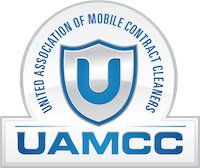Paul Kassander
UAMCC Associate Member

Part # 3004 $49.85
This product still qualifies for our FREE SHIPPING!
Hydraulic action easy squeeze trigger gun offers an extremely comfortable grip. 13.2 gpm, 4,100psi, 320 degrees F, 3/8" fpt inlet, 1/4" fpt outlet. PDF Breakdown
Trigger Gun - Guns are fairly simple mechanisms designed around a trigger-operated ball valve. The valve ball is held in a closed or forward position by flow of water and blocks flow of water through gun to the nozzle. When trigger is depressed it pushes a pin against ball, forcing the ball off its seat and opening a path for water to flow to the nozzle. When trigger is released gain a spring returns the ball to its seating and flow is again blocked. Gun should be comfortable for operator to use based on the performance
Generally front entry type guns are used on lower pressure units and are less expensive.
Rear entry guns are more comfortable as they have less kick-back and the hose does not get in the operators way.
The gun is probably the most abused component of the pressure washer and thereby the most frequently replaced. It pays to offer a quality one thereby avoiding expensive warranty cost.
Last edited by a moderator:



